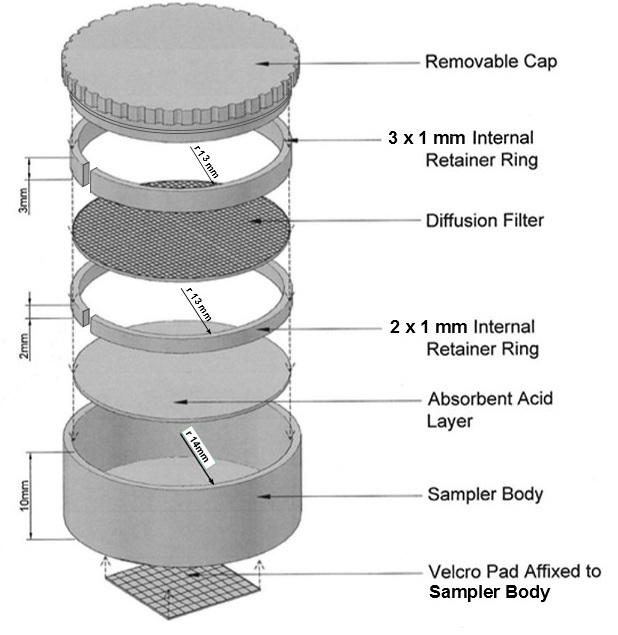Ammonia monitoring with the Willems-badge passive-diffusive sampler
Ammonia gas concentration is monitored using a passive-sampling method, the so-called "Willems-badge". The sampling device is a "badge" because it is a shallow cylinder, rather like a badge or button. To collect ammonia, the badge is placed, in the open air, on a supporting structure at a height of 1.2 meters above ground level. The badge contains a sorbent surface that traps ammonia, and a fixed-depth space defined by a spacer and a filter, creating a uniform-length diffusion gradient. The lid is taken off during exposure, and replaced afterwards: with the lid in place, the badge can travel by post between the laboratory and the monitoring site.
The Willems-badge sampler works well for low ambient concentrations, and high wind speeds—both typical in Irish conditions. The method has been tested against other passive-diffusive samplers, and calibrated using active denuder samplers.

The Ambient Atmospheric Ammonia Network
University College Dublin, Belfield, Dublin 4, Ireland. T: +353 1 716 7777 | E: brian.doyle.2@ucdconnect.ieThe Ambient Atmospheric Ammonia Network is operated by Brian Doyle, UCD Soil Science, University College Dublin | The Principal Investigator on the project is Dr Thomas Cummins, thomas.cummins@ucd.ie UCD Soil Science, University College Dublin | Project Manager, Dr Cara Augustenborg, Impact Research Management, Bray | Collaborator, Dr Julian Aherne, Trent University, Peterborough, Ontario, Canada | This project is funded by the Environmental Protection Agency (Project reference 1012-CCRP-MS.8).